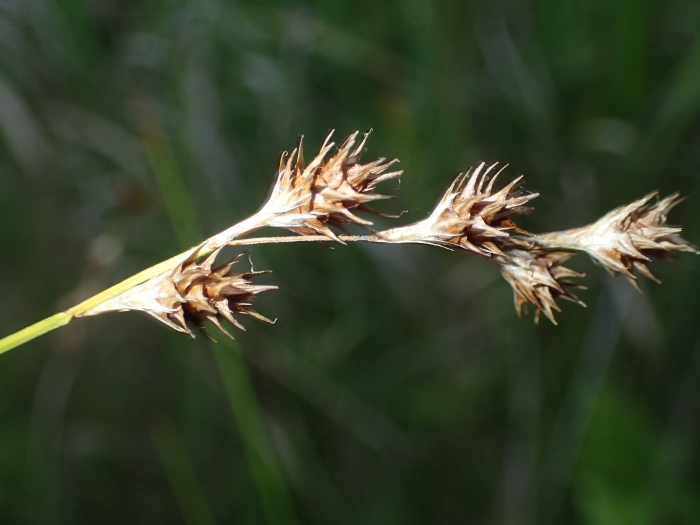Eastern Straw Sedge
(Carex straminea)
Eastern Straw Sedge (Carex straminea)
/
/

John Baur
CC BY 4.0
Image By:
John Baur
Recorded By:
Copyright:
CC BY 4.0
Copyright Notice:
Photo by: John Baur | License Type: CC BY 4.0 | License URL: http://creativecommons.org/licenses/by/4.0/ | Rights Holder: John Baur | Publisher: iNaturalist | Date Created: 2023-06-25T10:13:36-07:00 |















Estimated Native Range
Summary
Carex straminea, commonly known as Eastern Straw Sedge, is a perennial herbaceous plant that is native to wet meadows, marshes, and stream banks in North America, particularly in the eastern United States. It typically grows to a height of 2-3 feet (0.6-0.9 meters) with a similar spread. Eastern Straw Sedge has a clumping form with straw-colored seed heads that appear in late spring to early summer. The foliage is narrow and grass-like, providing a fine-textured element in garden designs.
Eastern Straw Sedge is valued for its adaptability to wet conditions and is often used in rain gardens, wetland restoration, and as a naturalizing plant in moist garden areas. It is also appreciated for its low maintenance requirements and its ability to provide habitat for wildlife. In cultivation, it prefers full sun to part shade and thrives in wet, poorly drained soils. While it is not known for significant pest or disease issues, it can spread in ideal conditions and may require management to keep it within bounds.CC BY-SA 4.0
Eastern Straw Sedge is valued for its adaptability to wet conditions and is often used in rain gardens, wetland restoration, and as a naturalizing plant in moist garden areas. It is also appreciated for its low maintenance requirements and its ability to provide habitat for wildlife. In cultivation, it prefers full sun to part shade and thrives in wet, poorly drained soils. While it is not known for significant pest or disease issues, it can spread in ideal conditions and may require management to keep it within bounds.CC BY-SA 4.0
Plant Description
- Plant Type: Grass
- Height: 2-3 feet
- Width: 1-1.5 feet
- Growth Rate: Moderate
- Flower Color: N/A
- Flowering Season: Spring, Summer
- Leaf Retention: Deciduous
Growth Requirements
- Sun: Full Sun, Part Shade
- Water: High
- Drainage: Medium, Slow
Common Uses
Bank Stabilization, Bird Garden, Erosion Control, Low Maintenance, Water Garden
Natural Habitat
Wet meadows, marshes, and stream banks in North America, particularly in the eastern United States
Other Names
Common Names: Pale Sedge, Straw Colored Sedge
Scientific Names: , Carex straminea, Carex cristata var. mirabilis, Carex festucacea var. tenera, Carex hormathodes var. richii, Carex richii, Carex scoparia var. fulva, Carex straminea f. multa, Carex straminea f. perlonga, Carex straminea f. richii
GBIF Accepted Name: